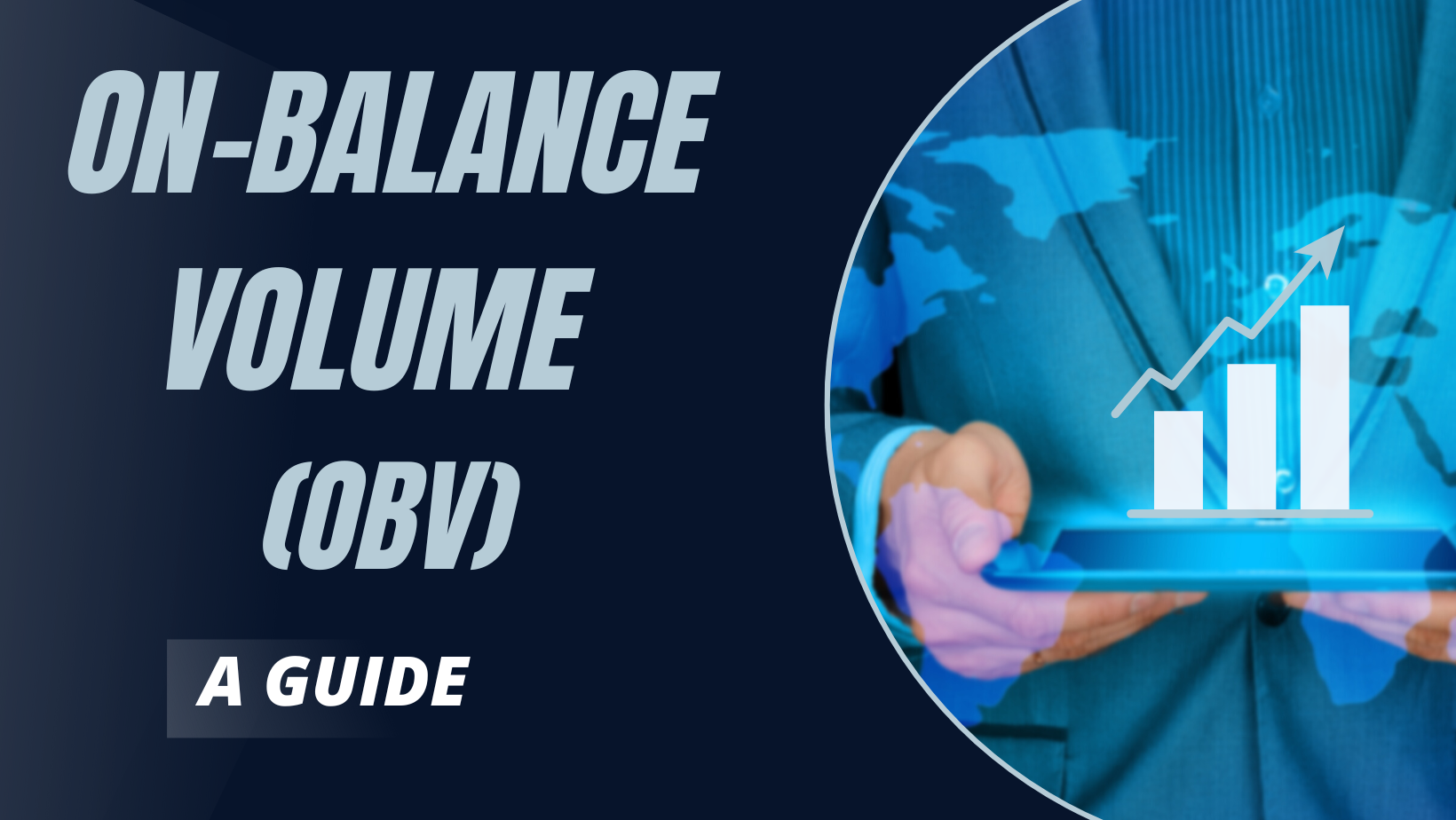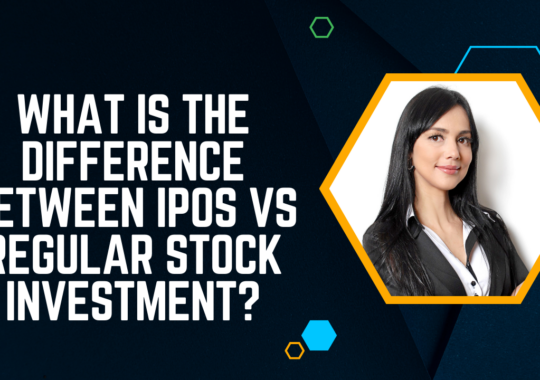Are you looking for a technical indicator that can help you identify trends and predict price movements in the market? If so, you may want to consider using the On-Balance Volume (OBV) indicator. Developed by Joe Granville in the 1960s, the OBV is a popular momentum indicator that tracks the volume of trading activity to provide insights into the strength of trends in the market.
The OBV is based on the principle that changes in trading volume often precede changes in price. By analyzing the volume of trading activity in relation to price movements, the OBV can help traders identify whether a trend is gaining or losing momentum, and anticipate potential trend reversals.
Get to know about Top 5 movies on the stock market

In this article, we’ll take a closer look at the On-Balance Volume indicator, including how it works, how traders can use it to improve their trading strategies, and some potential drawbacks to keep in mind. Whether you’re a beginner or an experienced trader, the OBV is a useful tool to have in your technical analysis toolkit.
So let’s dive in and explore the world of OBV!
What is On-Balance Volume (OBV)?
On-Balance Volume (OBV) is a technical analysis indicator that measures the volume flow of an asset over time. Developed by Joe Granville in the 1960s, OBV is based on the principle that volume precedes price movements. It helps traders to identify whether a security is being accumulated or distributed, by calculating the total volume and determining whether it is flowing in or out of the asset.
The OBV indicator works by adding the volume on up days and subtracting the volume on down days. The cumulative total is then used to plot a line on the price chart. If the OBV line is trending upwards, it suggests that the volume is increasing during up moves, indicating buying pressure. Conversely, if the OBV line is trending downwards, it suggests that the volume is increasing during down moves, indicating selling pressure. By analyzing the OBV line in conjunction with price movements, traders can gain insights into the underlying demand and supply dynamics of an asset.
How does the On-Balance Volume (OBV) indicator work?
- The OBV indicator adds or subtracts volume based on whether the price of the financial instrument moves up or down. If the price increases, the OBV adds the volume of the day, while if the price decreases, the OBV subtracts the volume of the day.
- The OBV then plots the cumulative total of these additions and subtractions to create a line that shows the overall buying or selling pressure of the instrument.
- Traders can use the slope and direction of the OBV line to identify potential changes in trend. If the OBV line is moving up, it indicates that buying pressure is increasing and the price is likely to follow, while a downward OBV slope may suggest that selling pressure is increasing, and the price may be headed lower.
- The OBV can also be used to identify divergence between the price of the instrument and the buying or selling pressure. For example, if the price is moving higher while the OBV line is moving lower, it may indicate that the trend is weakening and a potential trend reversal is on the horizon.
- The OBV can be used in conjunction with other technical indicators to confirm potential buy or sell signals. Traders may look for instances where the OBV line confirms a price trend or breaks through a key level, indicating a potential trend reversal.
How can the traders use The On-Balance Volume (OBV)to trade better?
- Identifying Trend Reversals: When the price of an asset is in a downtrend, but the OBV is moving up, it may reflect that the buying pressure is starting to build up, signaling a potential trend reversal. Similarly, when the price is in an uptrend, but the OBV is moving down, it may indicate that selling pressure is starting to build up, signaling a potential trend reversal.
- Confirming Trend Strength: When the price of an asset is in an uptrend, and the OBV is also moving up, it advicess that buying pressure is growing, confirming the strength of the uptrend. Similarly, when the price is in a downtrend, and the OBV is also moving down, it suggests that selling pressure is increasing, confirming the strength of the downtrend.
- Identifying Divergences: Divergences between the price of an asset and the OBV can indicate a potential reversal in the trend.
- Confirmation of Breakouts: Traders can use OBV to confirm the strength of a breakout. If the price of an asset breaks out of a resistance level, and the OBV also breaks out of its previous range, it may suggest that the breakout is genuine and has the potential to continue.
- Support and Resistance Levels: OBV can also be used to identify potential support and resistance levels. When the OBV breaks through a previous high or low, it may indicate a potential support or resistance level, respectively.
How to interpret The On-Balance Volume (OBV)?
- OBV is typically used to confirm the direction of price trends. If the price of an asset is rising and the OBV is also rising, this indicates that buying pressure is strong and the price is likely to continue to rise. Conversely, if the price is falling and the OBV is falling as well, this indicates that selling pressure is strong and the price is likely to continue to fall.
- Divergences between the OBV and the price can provide useful signals. For example, if the price is rising but the OBV is falling, this could indicate that buying pressure is weakening and a reversal could be imminent. Similarly, if the price is falling but the OBV is rising, this could indicate that selling pressure is weakening and a reversal could be on the horizon.
- The absolute value of the OBV is not as important as its direction. A higher or lower value doesn’t necessarily indicate anything about the strength of buying or selling pressure; what matters is whether the OBV is rising or falling.
- OBV can be used in conjunction with other indicators to confirm signals. For example, if a moving average crossover generates a buy signal, a rising OBV could provide further confirmation that the price is likely to continue to rise.
- It’s important to consider the context in which the OBV is being used. Different assets and timeframes may require different interpretations of the OBV signals, so it’s important to consider the overall market conditions and other factors that could impact the price.
Also read:
Here’s why trading indices could suit novice traders
Indices Trading Strategies You Must Know
How to earn 1 lakh INR per month in 2023
FAQs
How does the OBV indicator differ from other volume-based indicators?
Unlike other volume-based indicators, the OBV takes into account the price movements along with the volume, making it a more comprehensive indicator.
How is the OBV indicator calculated?
The OBV is calculated by adding or subtracting the volume of the current day, based on whether the closing price is higher or lower than the previous day’s closing price. The cumulative total is then plotted on the chart.
What does a rising OBV line indicate?
A rising OBV line indicates that the buying pressure is increasing and the price may follow the upward trend.
What does a falling OBV line indicate?
A falling OBV line indicates that the selling pressure is increasing and the price may follow the downward trend.
How can the OBV indicator be used in conjunction with other technical indicators?
The OBV indicator can be used in conjunction with other technical indicators to confirm trends, as well as identify potential reversal points.
What are the limitations of the OBV indicator?
The OBV indicator is not foolproof and can give false signals in volatile markets, making it important to use in conjunction with other technical indicators.
Can the OBV indicator be used for all types of financial instruments?
Yes, the OBV indicator can be used for all types of financial instruments, including stocks, futures, and forex.
How can the OBV indicator be used to identify bullish or bearish divergence?
Bullish divergence is identified when the price is making lower lows while the OBV is making higher lows, indicating that the buying pressure is increasing. Bearish divergence is identified when the price is making higher highs while the OBV is making lower highs, indicating that the selling pressure is increasing.
How can the OBV indicator be used for risk management in trading?
The OBV indicator can be used for risk management by identifying potential trend reversals and taking appropriate action to manage risk, such as setting stop-loss orders. It can also be used to confirm trend direction and avoid entering into trades that may have a higher risk of loss.
Conclusion
The On-Balance Volume (OBV) is a simple yet effective technical analysis tool that traders can use to identify trends, confirm price movements, and generate buy and sell signals. By keeping track of volume and price changes, OBV can provide valuable insights into the strength and direction of the market.
While it is not a foolproof indicator and should be used in conjunction with other technical and fundamental analysis tools, OBV can be a powerful addition to a trader’s toolkit. It is relatively easy to use and can be applied to a wide range of financial instruments and timeframes.
As with any trading strategy or tool, it is important to conduct thorough research, backtesting, and risk management to ensure that you are making informed decisions and minimizing potential losses. With careful consideration and practice, the On-Balance Volume (OBV) can be a valuable asset for traders seeking to make more informed and profitable trades.



